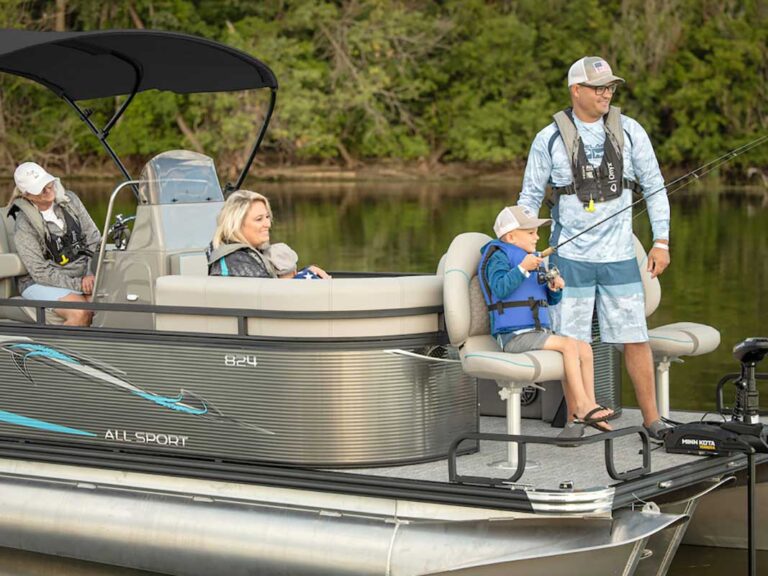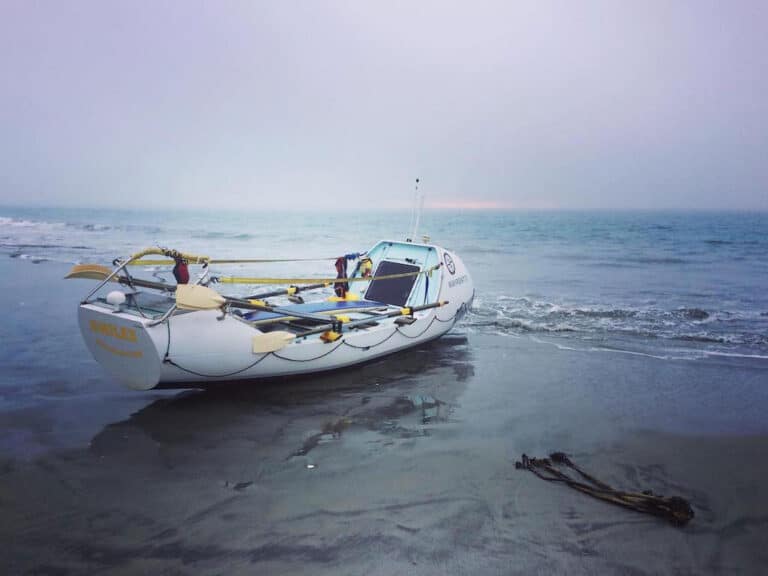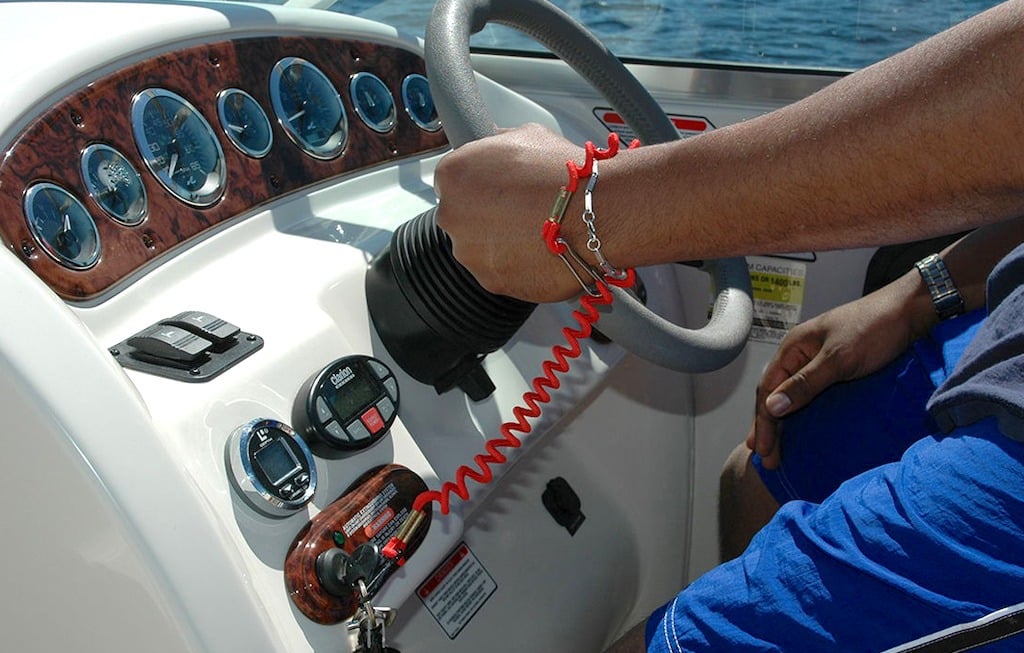
A new law took effect this month requiring boaters to use an engine cut-off switch on all personal watercraft (PWCs) and most powerboats less than 26 feet in length. The law aims to reduce the problem of runaway boats and propeller strikes, which account for about 4 percent of all boating accidents and injuries in the United States each year.
Also called a “safety lanyard” or “engine kill switch,” an engine cut-off switch is designed to stop a boat’s engine if the operator is thrown from the helm. The system typically consists of a switch mounted to the boat’s console (or the engine itself in the case of tiller-style outboards) and a clip that must be inserted into it for the engine to run. The clip is attached to the operator’s life jacket, clothing or wrist with a flexible lanyard, ensuring that when the driver leaves the helm for any reason the clip pulls out and immediately stops the engine. Wireless versions are also available, doing away with the physical tether and allowing the operator a little more flexibility to roam.
Engine cut-off switches save lives
Boats can make sudden turns with enough lateral force to throw an operator from the helm area or completely out of the boat. When this happens, torque from the spinning prop will cause the boat to go into a tight turn, becoming a hazard to the ejected operator, as well as anyone and anything else in the vicinity.
Dozens of Americans are injured or killed every year in accidents that an engine cut-off switch could have prevented, including 172 propeller strike accidents in 2019 alone. Those accidents resulted in 35 deaths and 155 injuries. Many more people were injured in other runaway boat accidents such as boats striking people in the water and boat-on-boat collisions.
“Every year Americans are injured and killed in boating accidents that could easily be prevented by the use of a simple engine cut-off switch,” said Verne Gifford, Chief of the U.S. Coast Guard Boating Safety Division. “This new rule is intended to make the use of these life-saving devices second-nature for boaters, just as seat belt laws have for motorists.”
It’s the law everywhere in the U.S.
The new use requirement took effect on April 1, 2021 and applies to all U.S. waterways, with fines of $100, $250 and $500 for the first, second, and third offenses, respectively. State and local authorities may choose to enforce the law differently, but using an engine cut-off switch is now the law for qualified vessels everywhere in the United States.
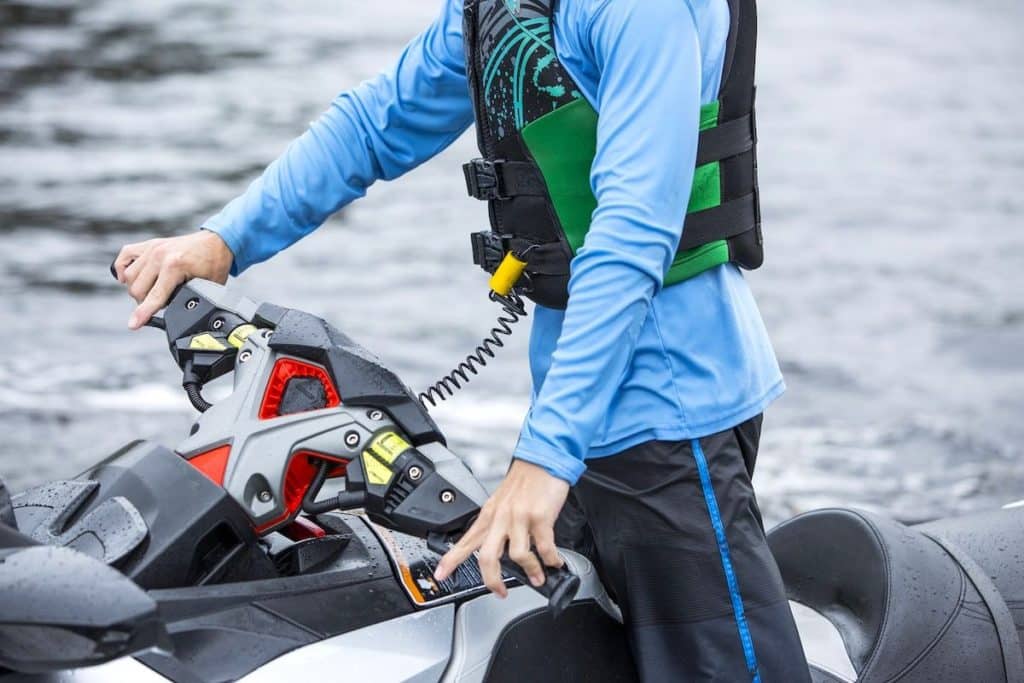
It applies to all PWCs and most small powerboats
The law applies to all personal watercraft and recreational boats under 26 feet with motors capable of 115 pounds of static thrust (a little under 3 horsepower). Boats not currently equipped with an engine cut-off switch are exempt, but that grandfather clause is closing fast. Another recent federal law required manufacturers to install engine cut-off switches on all new boats starting in January 2020.
The law applies only to recreational vessels, so law enforcement and other government-owned vessels are exempt. The law also does not apply to vessels whose main helms are inside an enclosed cabin.
It applies at planing speeds
The law doesn’t require you to have the lanyard attached when the vessel is idling or performing docking maneuvers. The rule takes effect when the boat reaches planing speed, which means you’ll need to have your cut-off switch and lanyard attached before you push the throttle forward. Best practice is to use the switch at all speeds.
It allows electronic cut-off switches
One of the major barriers to the use of lanyard-style engine cut-off switches is that they limit an operator’s mobility. The switch must be removed every time the captain moves more than a step away from the wheel, and then must be replaced before restarting the engine. In activities like fishing where an active captain might stop and start dozens of times in a day, there’s a strong temptation to put the clip in the switch and leave the lanyard dangling from the console.
Electronic cut-off switches solve this problem using the same transponder technology found in keyless automobile ignitions. These devices use an electronic fob that is carried by the operator and senses when it is too far from the helm or is submerged in water, activating the switch and stopping the engine.
Electronic cut-off switches can be used with multiple fobs, so that if anyone leaves the boat—operator or passenger—the motor will stop. The switch can then be reset and the engine restarted to recover the man overboard, if needed. Among the more popular electronic engine cut-off devices are ACR OLAS Guardian and FELL Marine Man OverBoard.
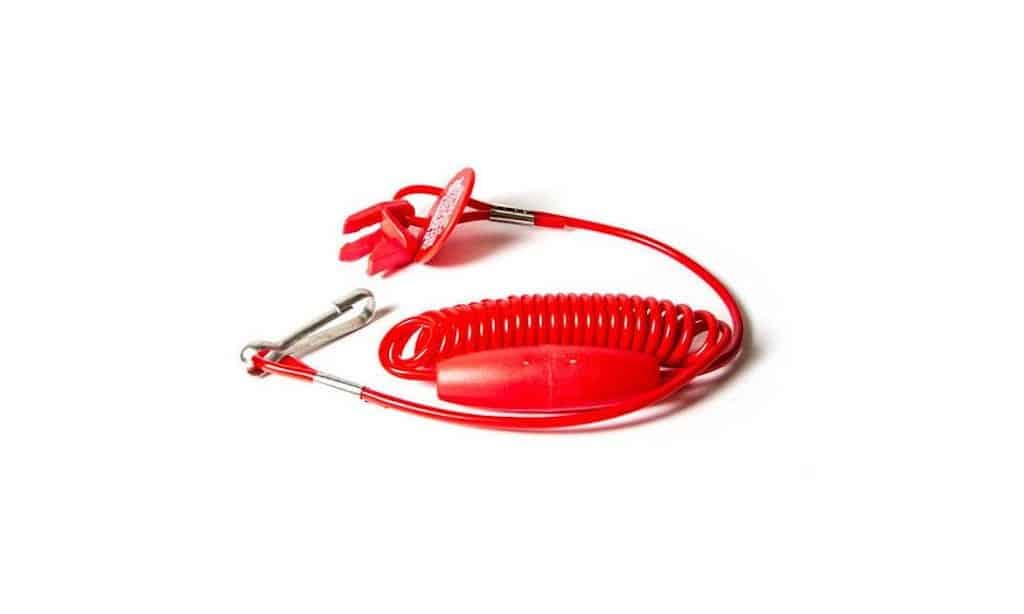
A seatbelt law for boaters
Paul Petani likens electronic engine cut-off switches to the new generation of life jackets that replaced the orange horse collar life jackets of yesteryear. “Now that life jackets are better and more comfortable, people are using them more,” says Petani, a vice president at FELL Marine.
The parallels between seatbelts and engine cut-off switches are also clear. Both are simple devices that save lives, but only when they’re used. And the history of seatbelt laws suggest the new mandate could make a big difference in the use of engine cut-off switches.
Seatbelt laws became the norm in U.S. states a generation ago, helping push seatbelt use rates from 16 percent in 1983 to nearly 90 percent today, and contributing to a 66 percent reduction in traffic deaths per mile travelled.
Engine cut-off switches—with a little help from the law—could have a similar effect on the water. And that will save lives.
The U.S. Coast Guard is asking all boat owners and operators to help reduce fatalities, injuries, property damage, and associated healthcare costs related to recreational boating accidents by taking personal responsibility for their own safety and the safety of their passengers. Essential steps include: wearing a life jacket at all times and requiring passengers to do the same; never boating under the influence (BUI); successfully completing a boating safety course; and getting a Vessel Safety Check (VSC) annually from local U.S. Coast Guard Auxiliary, United States Power Squadrons®, or your state boating agency’s Vessel Examiners. The U.S. Coast Guard reminds all boaters to “Boat Responsibly!” For more tips on boating safety, visit www.uscgboating.org.





